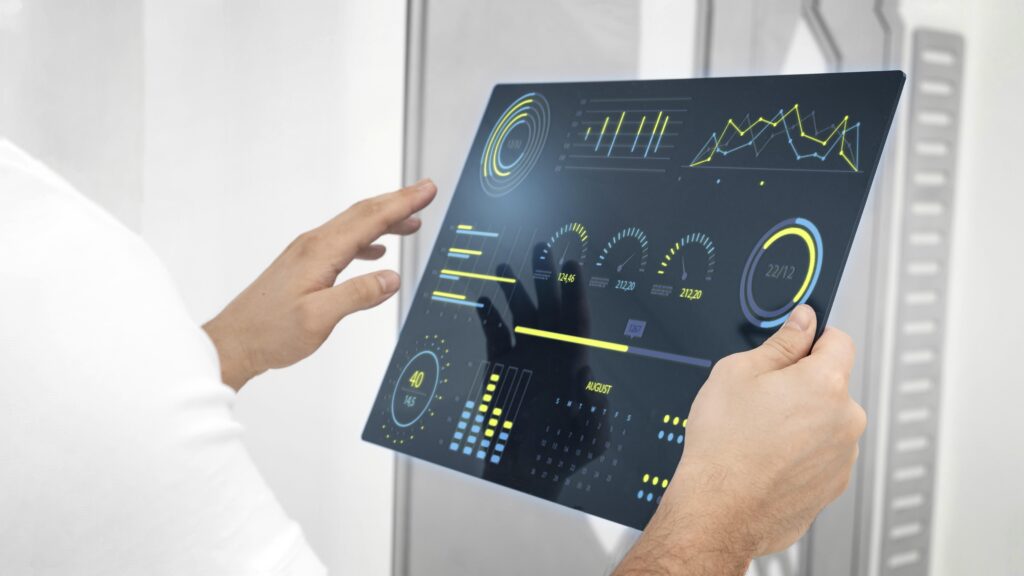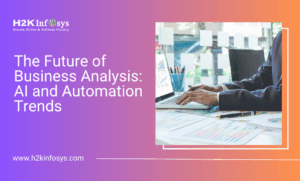In today’s digital economy, data is the lifeblood of business decisions. Every organization regardless of industry is collecting massive amounts of data to improve operations, identify opportunities, and gain a competitive edge. This makes data analysis a vital skill for Business Analyst. But what exactly does data analysis mean in the context of business analysis, and how much technical skill does a BA really need?
If you’re a Business Analyst or aspiring to become one, understanding what role data plays in your day-to-day responsibilities is critical. In this, we’ll break down what you need to know about data analysis, what tools and techniques are commonly used, and how you can apply them effectively even without being a data scientist.
1. Why Data Analysis Matters in Business Analysis
In today’s fast-paced, data-driven world, organizations are under constant pressure to make smarter, faster, and more accurate decisions. This is where Business Analysts (BAs) play a critical role and data analysis is at the heart of what makes their work impactful.
Traditionally, Business Analysts focused on gathering requirements, modeling processes, and ensuring that project goals aligned with business needs. However, the modern BA is now expected to leverage data to drive decisions, validate assumptions, and measure the success of business solutions.
So, why does data analysis matter so much in business analysis?
Here are some key reasons:
- Informed Decision-Making: Data helps BAs provide stakeholders with objective, evidence-based recommendations instead of relying on guesswork or assumptions.
- Identifying Business Problems: Analyzing trends, gaps, or performance metrics helps uncover underlying issues that aren’t always obvious through observation alone.
- Supporting Requirements Gathering: Data reveals user behavior and system usage patterns, offering clarity on what stakeholders truly need.
- Validating Solutions: After implementation, data helps BAs evaluate whether the solution delivered the expected results or if further improvements are needed.
- Enhancing Stakeholder Communication: Visualizing data through charts, dashboards, and reports makes it easier for non-technical stakeholders to understand complex information.
Whether you’re analyzing customer churn, sales performance, or internal processes, data analysis enables you to connect business objectives with measurable outcomes. In this way, Business Analysts become trusted advisors helping organizations reduce risks, improve efficiency, and seize new opportunities through data.
For any aspiring or practicing BA, understanding the role of data isn’t just helpful it’s essential.
2. What Data Analysis Involves for Business Analysts
Data analysis is an essential function of a Business Analyst’s role, but it doesn’t mean you need to become a statistician or data scientist. Instead, as a Business Analyst (BA), you’re expected to work with business data to support decisions, identify trends, and validate outcomes. Your goal is to help the organization make better, data-informed choices.
So, what does data analysis involve for Business Analysts?
At its core, it includes gathering, interpreting, and presenting data to understand current performance and recommend improvements. You might work with structured data from internal sources like CRM systems, spreadsheets, or databases. Your job is to analyze this information to uncover insights about operations, customer behavior, financial performance, or process inefficiencies.
Key tasks in data analysis for BAs include:
- Data Collection: Pulling relevant data from internal systems or stakeholders
- Data Cleaning: Removing duplicates, correcting errors, and formatting data
- Descriptive Analysis: Understanding what’s happened in the past (e.g., sales trends)
- Diagnostic Analysis: Determining why something happened (e.g., high churn rates)
- Comparative Analysis: Comparing data across groups, products, or time periods
- Visualization: Using charts and graphs to make insights easier to understand
- Reporting: Summarizing findings in reports, dashboards, or presentations
The objective is not just to explore numbers but to connect the dots between data and business goals. Whether analyzing customer feedback, project metrics, or sales performance, Business Analysts help leaders make smarter, faster decisions.
Even if you’re starting with basic tools like Excel or SQL, understanding how to extract meaning from data is a powerful asset in any BA’s toolkit.
3. Common Data Analysis Tools for Business Analysts
Business Analysts don’t need to be advanced programmers, but familiarity with the following tools is extremely beneficial:
1. Microsoft Excel
Still the most widely used data tool in business. Learn to:
- Use formulas and functions (VLOOKUP, IF, SUMIF)
- Create pivot tables
- Visualize data with charts and graphs
- Clean and organize data using filters, sorting, and conditional formatting
2. SQL (Structured Query Language)
Used to query databases directly. Learn basic skills like:
- SELECT, WHERE, GROUP BY, ORDER BY
- JOIN operations to combine tables
- Filtering and sorting large datasets
3. Power BI / Tableau
Data visualization tools used to create dashboards and interactive reports.
- Great for presenting insights to non-technical stakeholders
- Helps uncover patterns and trends with clarity
4. Google Sheets / Looker Studio
For real-time collaboration and lightweight analysis in Google Workspace environments.
Many Business Analysis Online Training courses offer hands-on practice with these tools even for beginners
4. Key Data Analysis Techniques Every BA Should Know
You don’t need to be a statistician to use data effectively. These basic techniques are enough to make a huge impact:
1. Data Cleaning
- Remove duplicates
- Handle missing values
- Standardize formats
- Eliminate outliers when necessary
Clean data is the foundation of reliable insights.
2. Sorting and Filtering
- Helps identify specific data points quickly
- Useful for segmenting customers, orders, products, etc.
3. Trend Analysis
- Track changes over time (e.g., month-over-month sales)
- Identify seasonality, growth patterns, or decline
4. Comparative Analysis
- Compare data between groups (e.g., region A vs. region B)
- Use for performance measurement and benchmarking
5. Data Visualization
- Present findings using bar charts, line graphs, pie charts, etc.
- Make insights easy to understand and decision-friendly
6. Root Cause Analysis
- Use the 5 Whys technique or Fishbone Diagram to identify underlying issues using data.
5. Real-Life Scenarios Where BAs Use Data Analysis
Data analysis is not just a theoretical skill it’s something Business Analysts (BAs) use daily to uncover insights, solve problems, and support better decision-making. Understanding how data analysis applies in real-world scenarios helps you see its practical value and relevance across industries.
Customer Churn Reduction
Scenario: A telecom company notices a sudden drop in customer retention.
BA’s Role: The Business Analyst pulls customer data from CRM systems and identifies patterns such as increased complaints, service downtimes, or poor onboarding experiences. Using Excel or Power BI, the BA segments customers by region, service type, and tenure, uncovering key churn drivers and presenting recommendations for improvement.
Sales Performance Optimization
Scenario: A retail chain wants to understand why certain products aren’t meeting sales targets.
BA’s Role: The BA uses Excel or SQL to analyze product performance by location, time of year, and marketing campaigns. They identify that poor sales correlate with low promotional activity and limited stock availability. Their analysis helps the sales and supply chain teams adjust strategies.
Process Improvement in HR
Scenario: An HR department faces delays in onboarding new hires.
BA’s Role: By analyzing process data and feedback forms, the BA maps out the existing workflow using Visio, calculates turnaround times, and identifies bottlenecks. Data reveals that background verification takes longer than expected, prompting a review of vendor contracts.
Marketing Campaign Analysis
Scenario: A digital marketing team wants to assess ROI on recent email campaigns.
BA’s Role: The Business Analyst pulls data from email marketing platforms (e.g., Mailchimp), evaluates open rates, click-through rates, and conversion metrics. Insights from the analysis guide the team to improve content strategy and targeting.
In all these examples, Business Analysts use data analysis not just to understand what happened, but to provide clear, actionable recommendations. This ability to turn numbers into narratives is what makes data analysis such a powerful tool in the hands of a skilled BA.
6. How Much Data Knowledge Is “Enough”?
One of the most common concerns among aspiring Business Analysts is: “Do I need to be a data expert to succeed?” The answer is reassuring no, you don’t need to be a data scientist, but a foundational level of data knowledge is essential.
As a Business Analyst, your role is not to build complex models or write advanced algorithms. Instead, your responsibility is to analyze existing data, interpret it meaningfully, and communicate insights clearly to business stakeholders. This means your data analysis skills should support business decision-making, not replace the work of a data analyst or scientist.

Here’s what “enough” looks like:
- Proficiency in Excel for sorting, filtering, pivot tables, and charts
- Basic SQL skills to query databases and extract relevant information
- Understanding of data visualization tools like Power BI or Tableau to present insights
- Ability to identify trends, gaps, and patterns in data
- Comfort with metrics and KPIs relevant to business goals
It’s more important to ask the right questions, understand the data’s context, and translate findings into actionable business recommendations. Even basic data fluency can significantly enhance your value as a Business Analyst.
As you grow in your role, you can gradually deepen your skills but to start, focus on mastering the core tools and concepts that help you bridge the gap between business needs and data insights.
Remember, it’s not about becoming a data expert it’s about becoming data-informed.
7. How to Improve Your Data Analysis Skills as a BA
Improving your data analysis skills as a Business Analyst (BA) is one of the smartest ways to enhance your effectiveness and value in any organization. Whether you’re just starting out or looking to grow in your current role, developing your analytical capabilities helps you turn raw data into actionable insights exactly what businesses need today.
Here are some practical ways to build and sharpen your data analysis skills:
1. Enroll in a Business Analyst Course with Data Focus
Look for Online Business Analyst Course programs that include hands-on modules in Excel, SQL, and Power BI or Tableau. These courses teach you how to clean, analyze, and present data in real-world business contexts.
2. Practice with Open Datasets
Download free datasets from platforms like Kaggle, Google Dataset Search, or Data.gov. Use these to practice cleaning messy data, building dashboards, and identifying trends.
3. Build a Mini Portfolio
Work on small projects like sales trend analysis, customer churn reports, or inventory dashboards. Document your process and results this helps you internalize skills and creates content for your resume or job interviews.
4. Learn from Real Use Cases
Read case studies or blog posts about how companies used data to solve business problems. This will teach you to think strategically and align analysis with real business goals.
5. Join BA and Data Communities
Participate in LinkedIn groups, Reddit forums, or Slack channels where analysts discuss tools, challenges, and new ideas. Engaging with peers helps you learn faster and stay updated.
With consistent practice and curiosity, you’ll gradually develop the data fluency needed to make impactful business decisions as a Business Analyst.
Final Thoughts: Data Is Your Superpower
If you’re a Business Analyst or planning to become one data analysis is not optional. It’s a core skill that enhances your ability to make smarter recommendations, understand root causes, and deliver real value to the business.
And the best part? You don’t need to be a data scientist to use data effectively. With a working knowledge of Excel, SQL, and visualization tools, along with a solid grasp of business processes, you can confidently explore, interpret, and present data to drive decision-making. In a world overflowing with information, your ability to make sense of it is what will set you apart.






























One Response